A ball is made of a material of density ρ where ρoil<ρ<ρwater with ρoilandρwater representing the densities of oil and water, respectively. The oid and water are immiscible. If the above ball is in equilibrium in a mixture of this oil and water, which of the following pictures represents its equilibrium position?
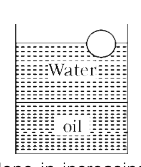
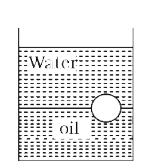
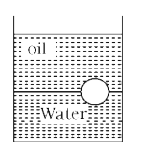
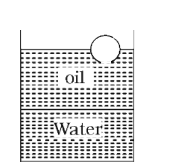
The correct Answer is:C
ρoil<ρ<ρwater
Oil is the least dense of them, so it will settle at the top with water at the base. Now the ball is denser than oil but less denser than water. So it will sink in oil but not in water. It will stay at the oil-water interface.
Topper's Solved these Questions
- BOOK - VMC MODULES ENGLISHCHAPTER - LIQUIDSEXERCISE - JEE ADVANCED (LEVEL -2)55videos
LIQUIDS
- BOOK - VMC MODULES ENGLISHCHAPTER - LIQUIDSEXERCISE - LEVEL -250videos
LIQUIDS
- BOOK - VMC MODULES ENGLISHCHAPTER - LAWS OF MOTION EXERCISE - IMPECCABLE53videos
LAWS OF MOTION
- BOOK - VMC MODULES ENGLISHCHAPTER - MAGNETIC EFFECTS OF CURRENT EXERCISE - JEE Advanced (Archive)78videos
MAGNETIC EFFECTS OF CURRENT
Similar Questions
A ball is made of a material of density ρ where ρoil<ρ<ρwater with ρoil and ρwater representing the densities of oil and water, respectively. The oil and water are immiscible. If the above ball is in equilibrium in a mixture of this oil and water, which of the following pictures represents its equilibrium position?
View Solution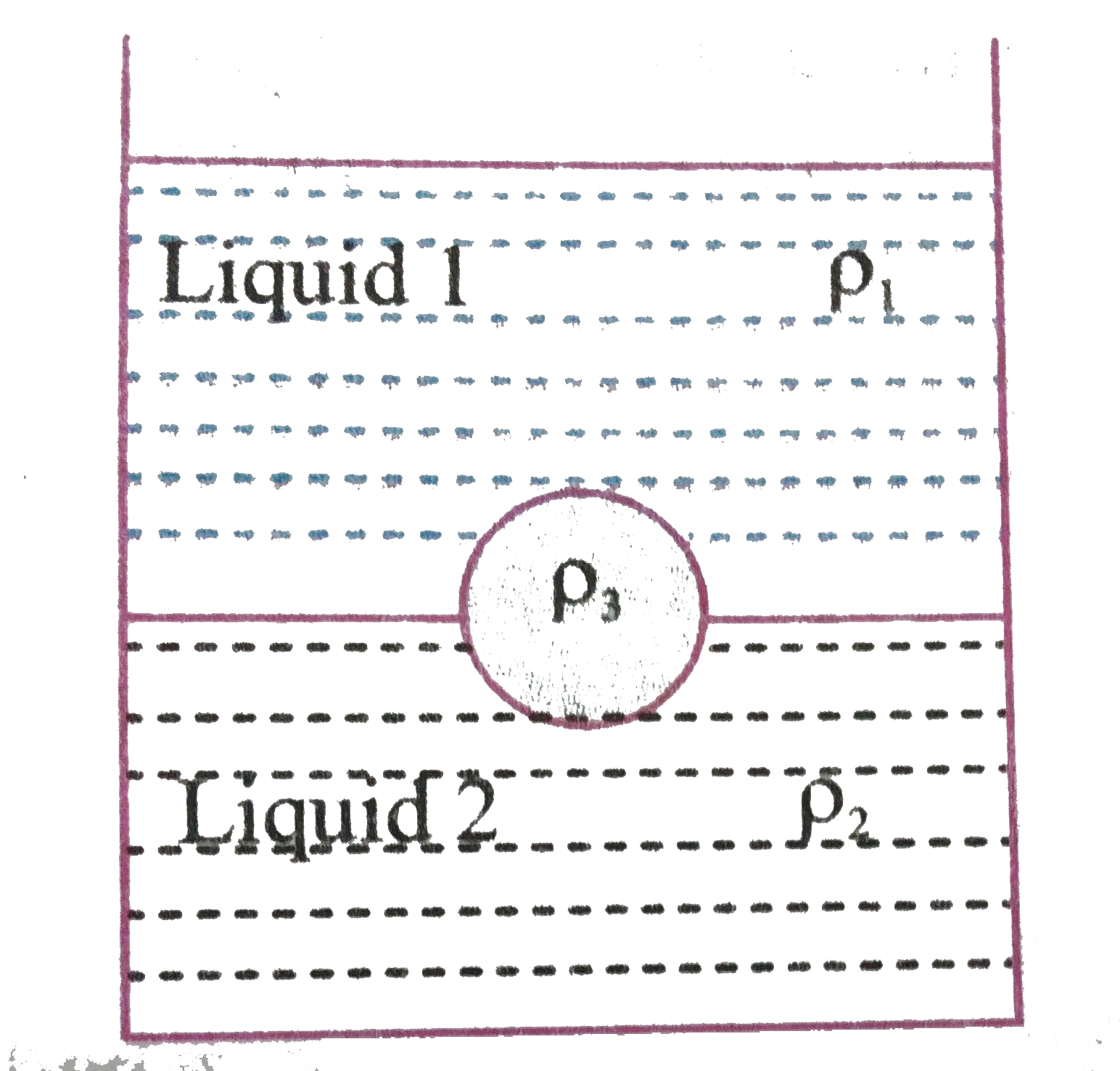
A jar filled with two non-mixing liquid 1 and 2 having densities ρ1 and ρ2 respectively. A solid ball, made of a material of density ρ3 is dropped in the jar. It come to equilibrium in the position shown in the figure. Which of the following is true for ρ1,ρ2 and ρ3?View Solution
Knowledge Check
- Question 1 - Select One
A liquid of density ρ0 is filled in a wide tank to a height h. A solid rod of length L, cross-section A and density ρ is suspended freely in the tank. The lower end of the rod touches the base of the tank and h=L/n (where n gt 1). Then the angle of inclination θ of the rod with the horizontal in equilibrium position is
Asin−1(√ρ0ρ)Bsin−1(n√ρ0ρ)Csin−1(1n√ρ0ρ)Dsin−1(1n√ρρ0)
There are n electrons of charge on a drop of oil of density ρ. It is in equilibrium in an electric field E. Then radius of drop is
View SolutionWhich of the following is used to separate oil from water?
View SolutionA ball of mass m and density ρ is immersed in a liquid of density 3ρ at a depth h and released. To what height will the ball jump up above the surface of liqud ? (neglect the reistance of water and air).
View SolutionWhen unit mass of water boils to become steam at 100∘C, it absorbs Q amount of heat. The densities of water and steam at 100∘C are ρ1 and ρ2 respectively and the atmospheric pressure is P0. The increase in internal energy of the water is
View SolutionA large drop of oil whose density is less than that of water, floats up through a column of water assume that the oil an the water do not mix. The coefficient of viscosity of the oil is η∘ and that of water is ηW the velocity of the drop will depend on
View SolutionA prism shaped styrofoam of density ρstyrofoam(<ρwater) is held completely submerged in water. It lies with its base horizontal. The base of foam is at depth h0 below water surface and atmospheric pressure is P0 Surface of water is open to atmosphere. Styrofoam prism is held in equilibrium by the string attached symmetrically as shown (Take ρstyrofoam=ρf,ρwater=ρw).
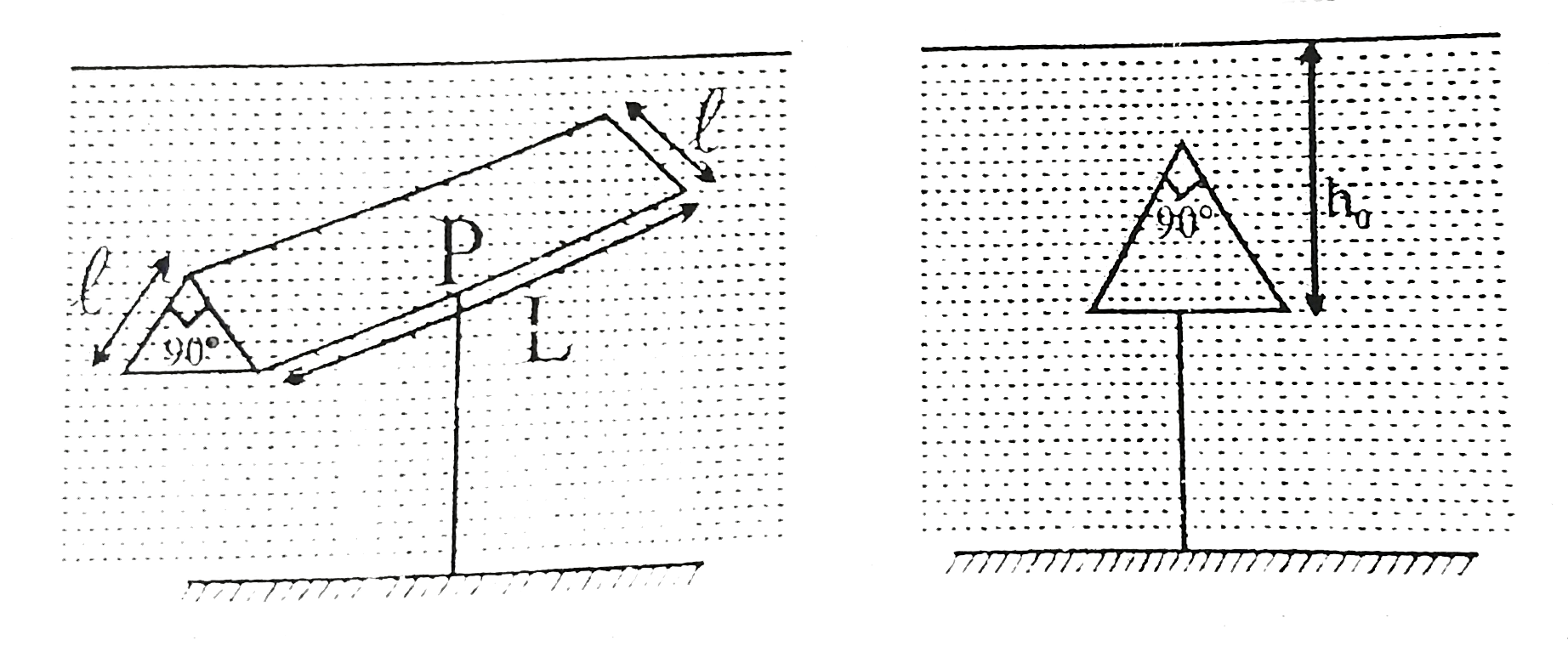
Magnitude of force on any one of the slant face of styrofoam isView SolutionA prism shaped styrofoam of density ρstyrofoam(<ρwater) is held completely submerged in water. It lies with its base horizontal. The base of foam is at depth h0 below water surface and atmospheric pressure is P0 Surface of water is open to atmosphere. Styrofoam prism is held in equilibrium by the string attached symmetrically as shown (Take ρstyrofoam=ρf,ρwater=ρw).
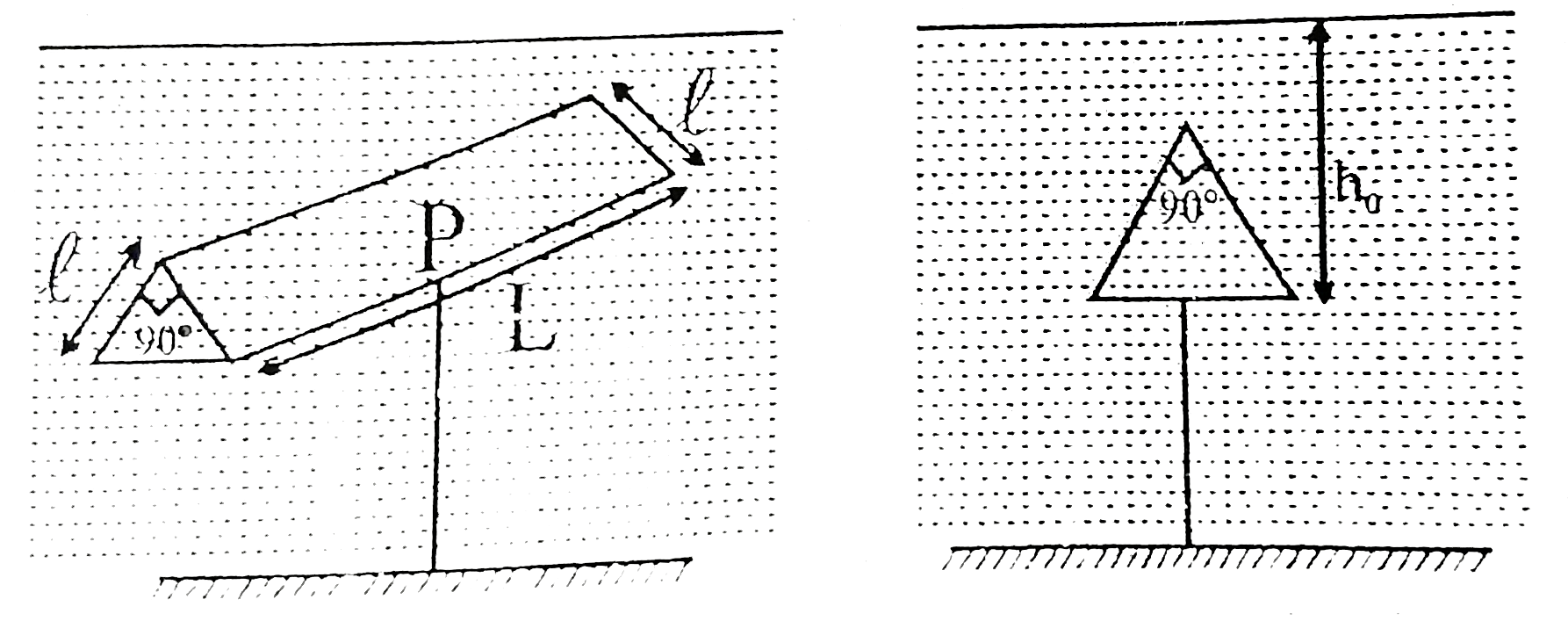
Net force exerted by liquid on the styrofoam isView Solution

